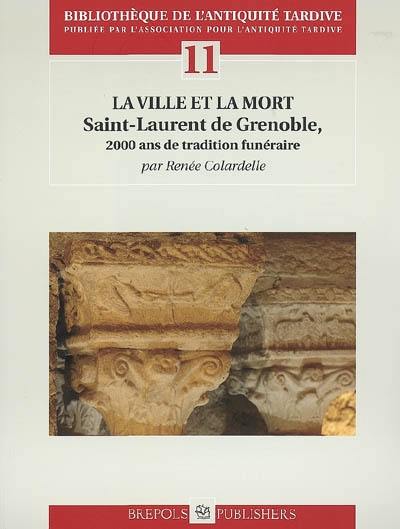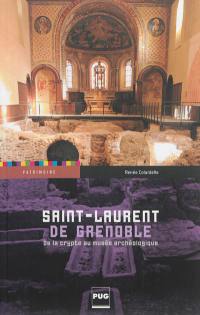
Fiche technique
Format : Broché
Poids : 400 g
Dimensions : 22cm X 28cm
ISBN : 978-2-503-52818-2
EAN : 9782503528182
La ville et la mort
Saint-Laurent de Grenoble, 2.000 ans de traditions funéraires
Quatrième de couverture
La ville et la mort
Saint-Laurent de Grenoble, 2000 ans de tradition funéraire
La fouille de Saint-Laurent montre l'évolution, depuis l'Antiquité, du principal site funéraire grenoblois.
Parmi plusieurs mausolées de la voie des Alpes, entre Isère et montagne, un édifice pourvu d'une crypte funéraire dallée garnie d'une banquette, d'une niche et d'une ou deux fenestellae, est certainement vers 400 la memoria de l'un des premiers évêques. Le corps saint suscite le regroupement de nombreuses sépultures, formae et sarcophages.
Une église cruciforme à bras triconques superposés s'enracine sur cette memoria : elle semble être la basilique épiscopale qu'en présence de la cour burgonde Avit de Vienne consacre, d'après ses Homiliae, en 516. Vers 600, elle sera voûtée et richement décorée. Durant tout le haut Moyen Âge, Saint-Laurent sera la plus importante des églises funéraires suburbaines (les autres étant Saint-Antoine, Saint-Sixte et Saint-Ferréol).
Une contre-église remplace vers 800 la memoria dont elle conserve les cryptes. Ce pôle occidental est lié par une nef rectangulaire à un classique choeur orienté sur transept, dont le bras oriental de l'église précédente forme une des cryptes.
Prieuré de Saint-Chaffre en 1012, l'église devient paroissiale d'un faubourg que ses murs protègent, renforcés au XIVe siècle par divers dispositifs militaires. Avec son clocher-porche, ses décors romans, son cloître et son cimetière, elle évoluera ensuite plus banalement jusqu'à la Révolution qui met fin au prieuré. Viendront ensuite la découverte de Saint-Oyand par Champollion-Figeac et les restaurations sous l'égide de Mérimée.
L'étude diachronique souligne l'importance des pratiques funéraires et du culte des saints dans le christianisme gaulois ainsi que la manière dont se concilient les dispositifs architecturaux locaux et des pratiques et liturgies en perpétuelle transformation.
The excavations at Saint-Laurent show the evolution of the main burial site of Grenoble since the Antiquity.
Among the mausoleums found on the Alps road between the Isere river and the mountain a building with a paved crypt provided with a bench, a niche and one or two fenestellae must have been the memoria of one of the first bishops around 400. Around this holy body are grouped numerous burial places, formae and sarcophagi.
A cruciform church with superimposed trefoil transepts is built ou this memoria : it seems to have been the episcopal basilica that Avit de Vienne consecrated in 516, according to his Homiliae, in the presence of the court of Burgundy. Around 600 it was vaulted and richly decorated. In the Early Middle Ages, Saint-Laurent is the most important of the suburban burial churches (the others being Saint-Antoine, Saint-Sixte and Saint-Ferréol).
Around 800 an opposite church is built against the former on the place of the memoria of which the crypt has been kept. This western pole is linked through a rectangular nave with a classical choir leading into the transept. The eastern part of the previous church forms its crypt.
After having been the priory of Saint-Chaffre in 1012, the church becomes the parish church of a suburb protected by its walls which will be reinforced in the XIVth century by various military devices. With its belfry-porch, its romanesque ornamentation, its cloister and churchyard it will later be subject to more common alterations untill the Revolution, which marks the end of priories. Later episodes will be the discovery of Saint-Oyand by Champollion-Figeac and restoration works under Mérimée's aegis. The diachronic study stresses the importance of funeral practices and worship of saints during Gallic christianity and shows how local architecture remains in harmony with perpetually changing practices and liturgies.







